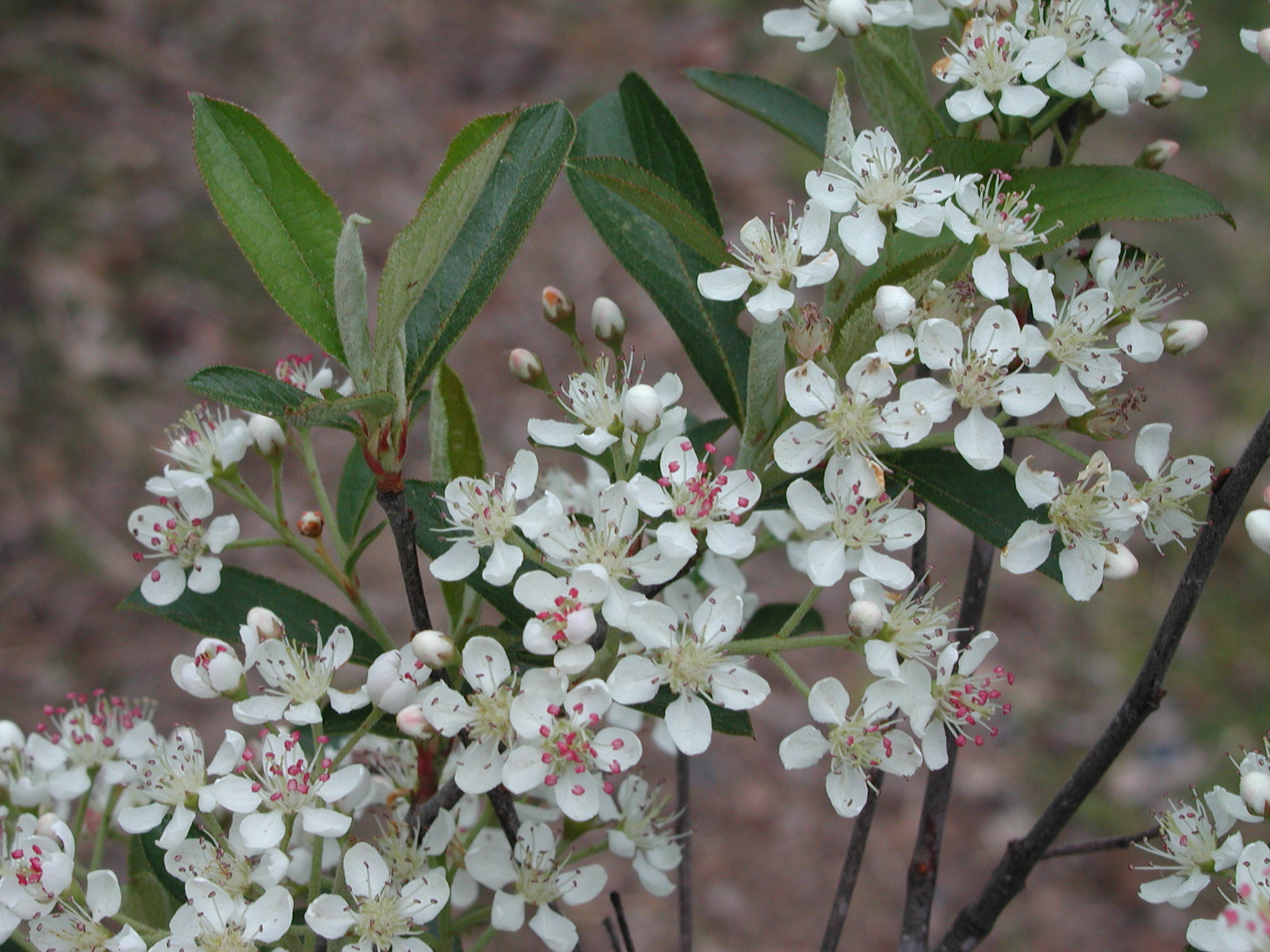Resource Library
Plant of the Week: Aronia Chokeberry, Chokecherry
Aronia Chokeberry, Chokecherry -- Chokeberry flowers show the typical form of woody members of the rose family and closely resemble those of pears, serviceberry and photinia. (Image courtesy Gerald Klingaman)
Download High Resolution
You are what you eat, or so the saying goes. I’ve chosen to be pretty much oblivious to the buzz about antioxidants, glutens and the other hot topics of nutrition that consume the health conscious among us. But occasionally, when the buzz intersects with a plant that interests me, I pay more attention. Chokeberry (especially Aronia melanocarpa) has recently risen to notice in the United States and bears closer study.
Chokeberry is the common name given to two species of Aronia that belong to the rose family and are found in the eastern parts of North America from southern Canada to Georgia, west to Arkansas and north to Minnesota. They are slow growing, long lived suckering deciduous shrubs about 6 feet tall and wide with the general growth form of a lilac.
The open, unarmed branches are gray-brown in color and bear 2-3 inch long simple, waxy leaves with small marginal serrations. Fall color is variable but with A. arbutifolia, the red chokeberry, sometimes quite good in hues of deep red late in the season. White to pale pink, 5-petaled flowers are produced in terminal or lateral clusters of 10 to 15 blossoms in early spring.
The fruit are the most noticeable difference between our two native species. In Aronia melanocarpa, black chokeberry, the juicy pea sized berries (botanically a pome) are black in color and contain 1 to 8 seeds. Black chokeberry is grown commercially for juice production. A. arbutifolia, red chokeberry, has attractive red fruit and is grown as an ornamental. Both species are edible but the high tannin content makes your mouth pucker when you eat the berries fresh, hence the common name.
The name Aronia has been around since 1789 but, because the flowers so closely resemble other species of the woody members of the rose family, botanists can’t resist the urge to reclassify it. Carl Hunter, in his 1989 Trees, Shrubs and Vines of Arkansas lists it as Pyrus arbutifolia. In 1991 it was renamed Photinia melanocarpa but DNA data from 2007 was not been able to substantiate that change so the Flora of North America rejected the change and stayed with Aronia.
In L.H. Bailey’s 1911 The Evolution of Our Native Fruits, no mention is made of the commercial potential for this native shrub. But just after WW II Russia was casting about for plants they could grow in their cold climate that had high vitamin C content and happened upon the black chokeberry. By the 1950’s large scale plantings on Russian collective farms began appearing. By 1985 over 40,000 acres of black chokeberry was grown in Russia. Poland had 10,000 acres under production in 2005. The fruit is mainly marketed as a juice but can also be made into jellies, wines or used dried or fresh for use in baking.
With the federally funded research into the health benefits of antioxidants, interest in growing chokeberry in the United States began appearing about 2000. Iowa and neighboring Midwestern states seem to be leading the charge. Researchers there have introduced Russian and other European cultivars for trial. The name “chokecherry,” actually the common name for Prunus virginiana,is sometimes erroneously used to describe Aronia products.
Both species of Aronia are relatively easy to grow in well drained garden soil. Though found in the wild along moist stream banks and edge-of-woods sites, they will grow in a wide array of soil and climatic conditions in zones 3 through 8. The black chokeberry can be added to the vegetable garden or planted as part of the edible landscape. When used as an ornamental, the red chokeberry is best massed and pruned back every few years to keep it from becoming leggy and overgrown.
For more information about horticulture or to see other Plant of the Week columns, visit Extension's Web site, www.uaex.uada.edu, or contact your county extension agent. The Cooperative Extension Service is part of the U of A Division of Agriculture.
Pursuant to 7 CFR § 15.3, the University of Arkansas System Division of Agriculture offers all its Extension and Research programs and services (including employment) without regard to race, color, sex, national origin, religion, age, disability, marital or veteran status, genetic information, sexual preference, pregnancy or any other legally protected status, and is an equal opportunity institution.
